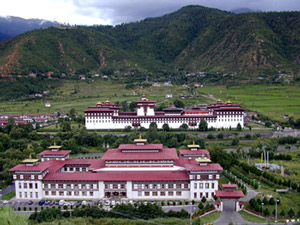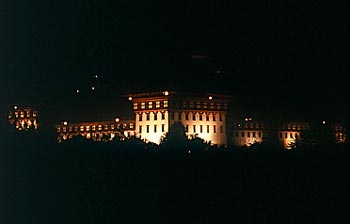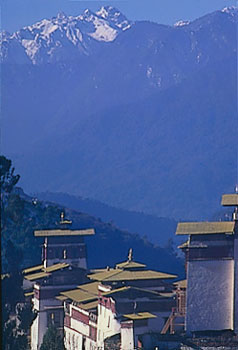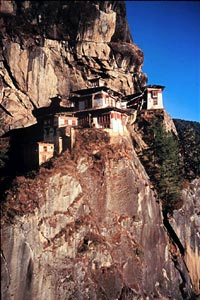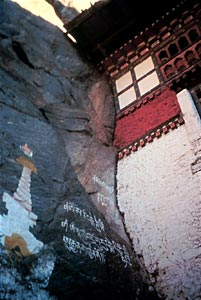| home | bhutan | gallery | about | guestbook |
![]()
You are in the 1999-2002 Gallery |
click here to go back to gallery home |
| landscapes | architecture | culture | closeups | hawaii | b&w |
GALLERY:
architecture
|
Tashichhodzong and Convention Center, Thimphu 2001 Tashichhodzong is the dzong in the background. Dzongs are traditional Bhutanese fortress monastaries and they serve as both administrative and religious headquarters. Almost every major valley in Bhutan has/had a dzong. This is in Thimphu, and used to house the national assembly until it moved to the newer building in the foreground, which is modelled after the Tashichhodzong.
|
| Tashichhodzong
at night, Thimphu, 2000
|
|
|
Trongsa Dzong, Central bhutan Trongsa dzong, in central Bhutan, is the largest dzong in Bhutan and used to command a strategic crossroad in the old days (before 1960s).
|
| Taksang
Monastary The history of Taktsang dates back to 747 AD when, as legend goes, Guru Rimpoche (Padmasambhava) landed on a flying tiger (hence "tiger's nest") and subdued the evil spirits in the region. The cave where he meditated is the site of the Pelphug Lhakhang (temple/shrine). Many other fmanous buddhist saints, including Milarepa, are said to have meditated here. The actual construction of the monastary was undertaken by Gyelse Tenzin Rabgye, the fourth spiritual ruler of Bhutan and a famous buddhist lama and builder, who completed the main lhakhang in 1694. There are a complex of monastaries and meditation retreats but taktsang is the main monastary and most visited by pilgrims from all over Bhutan and the world. Samsung slimzoom 110; kodak elitechrome iso 100; |
|
|
Close up
of Taksang Monastary This is a close up of the monastary and the cliff interface. The ancient Bhutanese built into the landform - this type of construction can be seen on a lot of the dzongs (monastary fortresses where the base is not built on a flattened area but rather flows with the contour of the hill. I wonder if Frank Loyd Wright ever saw old national geographic pictures from Bhutan. This and the above pictures were taken in 1996 winter. Samsung slimzoom 110; kodak elitechrome iso 100;
|
| Traditional
lock and doorway: Pambisa, Paro This was another entry that I had submitted to the millenium competition. The lock is a traditional one that is still used in many parts of rural Bhutan. The writing on the door reads, "Jenpa Lekso" which means "welcome". This door stands at the entrance of my father's ancestral home. Now his elder brother and his family live there. Life in Pambisa village is still mostly as it was generations ago, except now it is more accesible with the construction of a feeder (dirt) road and the growing emphasis on cash crops like apples and asparagus. There is still no electricity there. Nikon N60; 28-70 AFD 3.5-5.6 nikorr; kodak elitechrome iso 100; fall 1999 |
|
|
Traditional
Stairway : Indichholing, Trongsa. Wood features prominently in Bhutanese traditional construction. All construction done in the traditional style will be done without the use of any nails, even for large monastaries and fortresses. This shot won first place in the Kuensel Millenium Photo Contest with the theme "Bhutan and the Millennium". My focus was on Bhutanese architecture. The first prize was a 65 liter fridge. Nikon N60; 28-70 AFD 3.5-5.6 nikorr; kodak elitechrome 200iso; December 1999 |
You are in the 1999-2002 Gallery |
click here to go back to gallery home |
![]()
all
images © thinley namgyel
